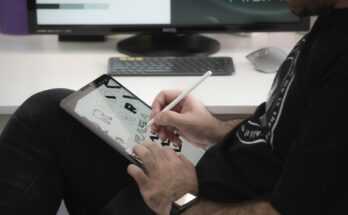We interview designers, we ask their expert opinion, so that our articles are based on real experience, not just the findings and fantasies of journalists and copywriters.
This is a great interview about how interior designers work, how their working day is, what their work schedule is, and what the challenges of the profession are. You will find out what qualities an interior designer of residential and commercial spaces should have, what he or she should be able to do, and who is suitable for this profession. And also – how much such a specialist earns and where to study for it.
To create a full picture of reality about this creative profession, we interviewed several interior designers. Today, the questions prepared by journalists are answered:
- Joan Taylor – residential and public space designer (Silver Spring);
- Betty Garcia – public and residential designer (Reno);
- Josephine Comer – interior designer with 15 years of experience (Leavenworth);
- Judy Potts – founder of the architectural firm;
- Donna Purvis – founder and CEO of a studio and educational platform;
- Robert Bond – founder of a family design studio;
- Catherine Albert – interior designer.
Who is an interior designer? How would you describe your professional field?
Joan Taylor says that a designer is someone who knows how to not just arrange furniture and decorations beautifully, it is someone who knows how to redesign a space completely, forming a comfortable living environment.
Betty Garcia is convinced that an interior designer is a creator of interiors for people’s happy lives, he is not just an artist who draws something abstract, but a real psychologist who works with people for their own sake.
Josephine Comer believes that the designer improves the quality of life in general, creating the interior space in such a way that it is aesthetic, functional and unique, while keeping up with modern trends and technology.
Robert Bond: “The designer helps to understand the essence of design, teaches to feel the philosophy and meaning of each thing. But do not forget that design is also service.
The 3 main challenges for “interior designers” are:
- Create a preparatory design project of a realistic type, and in a way that takes into account every detail: and ergonomics, and the wishes of the customer (you need to think through everything so clearly that each phone charger has its own comfortable place). Here it is important not to forget about the declared budget for the entire concept.
- During the design must be perfectly thought out and drawn on the drawings, every difficult or simple point must be taken into account and be correctly played as a designer, and contractors involved in the implementation of the conceived plan. It’s true: a good draft of drawings takes about forty sheets. Think about it.
- And if more creatively, the designer’s task is also to put the room in the right order, so that the storage organization becomes a unified system that fits the customer’s vision. You have to be sure to catch the wave of your client, taking into account his spiritual component.
What are the advantages and disadvantages of the profession?
Judy Potts is an ardent fan of his profession, who sees no particular disadvantages to being an interior designer, except perhaps the fact that you have to spend a lot of time on the road, staying on construction sites and sitting at a computer. The main advantages are that you can freely create and work from anywhere in the world.
Donna Purvis: “The main advantage of the profession is that if it is your vocation, you get a buzz out of it. There is creativity in it. Also the market is growing, there are a lot of opportunities for growth and development. On the downside, you have to study and practice a lot to become a pro. Keep your hand on the pulse, constantly deepen and expand your knowledge. The job of a room designer is a high responsibility. Mistakes can be expensive, and you have to pay for them out of your own pocket.
Robert Bond believes that the advantage of designers is that the profession is respected and allows you to realize yourself from different sides. The disadvantages are the need to study most related fields: you have to know everything you are dealing with: electrics, plumbing, etc. You need to have at least a theoretical understanding, otherwise a designer is just an artist, nothing more.
Catherine Albert put it succinctly: “The pluses are creativity, creativity and ambition. The downsides are more responsibility”.
Joan Taylor was not left out and gave a detailed and very interesting and philosophically thoughtful answer:
Among the advantages she attributed:
- the creative aspect, manifested in the ability to poetically design traces of life, creating pure forms for the senses and allowing them to be broadcast to those around them;
- with the help of design you can comprehend the world and transfer knowledge, you can unite potentials in a single team of like-minded people to multiply the result.
Joan’s disadvantages included:
- the most important disadvantage is the length of time it takes to wait for the final result: it takes from 3 months to a year to create a project;
- time-consuming process, which does not happen in a single step; you need not just do a lot of work, but also to build relationships with the entire team of experts;
- The ability to maintain the creative energy to always come up with something new, which would not only please the customer, but also himself. Betty Garcia decided to reflect not only on the pros and cons of the interior designer profession, but also looked at his work in different ways: for himself, for hire, or as a project manager:
If the interior designer is self-employed, the advantages are apparent in the complete freedom and control of the varied process. Here he is a draftsman, a designer, and a negotiator. The downside is that you have to carry everything on your own.
The other story is the work for hire. The advantages are a fixed schedule and a steady paycheck. The disadvantages lie in the limitation on earnings, and also in the fact that all projects will be implemented under the auspices of the company.
The third option – the head, or even with this entrepreneur, who has organized his own design studio. The pros here are that this is more of a business, where there is commercial success. From this comes a disadvantage: because of the increased responsibility there is little time to implement their design talents.
What qualities should a designer have, what kind of people is this activity suitable for?
Betty Garcia believes that the designer simply must have impressive mental stamina, the ability to withstand all the negative energy that swirls around construction. He must always stay calm and know what to do with it all. The profession is all static, it goes into novelty, it involves risks both financially and in terms of reputation. To be an interior designer, you have to live and think about this profession, not just consider it a job.
Robert Bond: “Today’s competition demands skill from the designer. It is difficult, it is long. It is not for everyone. The main quality for a designer is not to stop learning. The profession does not suit the unhurried and lazy.”
Josephine Comer believes the most important thing is to have a creative streak, and also to be able to listen and hear the client, and be logical and quick-witted, meticulous, accurate and systematic. The profession is not suitable for non-creative, lazy, non-contact, categorical and inflexible people.
Donna Purvis put it succinctly and extremely creatively:
- an interior designer must have a sense of taste, especially for life, and if he doesn’t have it, he needs to build it up by looking at pretty pictures and pumping his visual muscle like in the gym, but he also needs to be careful about quality;
- he needs to have flexibility, tact, the ability to be constantly renewed and to look forward; to be in a state of love, kindness and sincerity, to be able to express all that is valuable and unexplainable;
- he must have an outstanding intellect and a broad outlook in order to create truly quality projects.
“I’ll let you in on a little secret: to become an outstanding pro, there must be more rest than practice!”
Judy Potts believes that a designer must not only have a capacious thought process aimed at the creative wave, but also be well versed in psychology in order to understand what customers want from him in a particular case. At the same time it is very important not to forget that you need to be able to organize yourself competently in terms of work and constantly strive to develop in the professional sphere. Judy Potts convinced that to enter the field of design can only be those people who understand that everything can not be learned in a couple of months, that to become a good specialist, it takes a lot of patience, not just a skill to work with computer programs. Applications can not do everything for the designer, they act only as a tool-assist, for everything else requires self-organization and diligence. Without this there is no way.
So where do you look for clients and how do you find your first job as an aspiring interior designer?
- Try to go to a design office, there you can gain experience and make useful acquaintances, it will help lead to the first independent project, and it will be followed by “word of mouth”.
- You can take a couple of projects on a pro bono basis, which will serve as advertising. Next, you should set a low price for your services. After creating a portfolio, you need to start PR yourself in social networks, to think about promoting your own site.
Do not be afraid to announce yourself as an interior designer. Write a post about it in the networks, tell all relatives and friends. Sooner or later someone will need such services. The more creative your personality and social message, the more desire to act, the faster the first orders. So you can quickly come to success. Especially if you take your work lightly and do projects with pleasure.
How to develop in the interior design profession, how not to get stuck at one point?
Catherine Albert believes that the next level to which a designer must necessarily reach is opening his or her own studio, creating furniture (textiles) to order, or a full cycle of work with its own construction crews. And for that you will have to work long and hard! You will have to study a lot!
Judy Potts: “Development comes through getting out of your comfort zone. It is necessary to do what is scary to do”.
Donna Purvis believes that in order to grow in a professional field, you need to choose a narrow specialization and deepen your knowledge on that topic. You can choose, for example, a particular style of interior or take orders only for commercial real estate. And it does not matter who you are: a freelancer, a businessman or an employee in a design studio. True, in your own business, you can move exponentially, filling your team with more and more new employees to implement any standard design projects.
Robert Bond: “You need to master the visualization at a high level. A designer who is not a visualizer earns a lot less money and is less quoted on the labor market.



